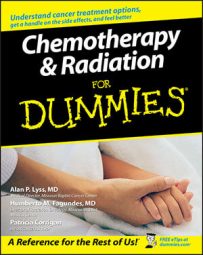More than 15,000 bone marrow transplants are performed in the United States every year, and the treatment is ever-evolving. Bone marrow transplants are commonly used to treat leukemia, lymphoma, multiple myeloma, neuroblastoma, and childhood brain tumors — and clinical trials are under way to study the value of transplants on treating other forms of cancer.
What is bone marrow?
Bone marrow is a soft, spongelike material found in the central cavity of bones. The marrow contains immature cells called stem cells that produce blood cells. When you're born, you have active marrow in every bone, and blood cell development is at its highest. By the time you're a young adult, the marrow in your hands, feet, arms, and legs has stopped producing blood cells. Your backbones, hip bones, shoulder bones, ribs, breastbone, and skull, however, keep up the work of blood cell development throughout the rest of your life.
Most stem cells are in the bone marrow, but some circulate through the blood. Through a process called hematopoesis, the stem cells produce white blood cells (leukocytes) to fight infection, red blood cells (erythrocytes) to carry oxygen, and platelets (thrombocytes), which are clotting agents. Without these important components, the smallest infection could wreak havoc in your body.
How does a transplant help?
Originally, bone marrow or stem cell transplants were used as a last resort for treating leukemia. Today, the procedure is used to treat a number of illnesses, often earlier in the course of the disease than in the past.
A bone marrow or stem cell transplant can give a second chance to someone who has
One of the types of cancer commonly treated with a transplant
Cancer that is not responding to standard treatment
A previously treated cancer that has come back
Before the transplant takes place, patients go through a process of conditioning, treatment with very high doses of chemotherapy and/or radiation therapy, which kill cells that (like cancer cells) divide rapidly. These doses serve three purposes:
To eliminate diseased bone marrow
To reduce the number of cancer cells in the body
To suppress the immune system to prevent rejection of the transplant
During a bone marrow transplant, healthy stem cells are transplanted to replace those destroyed by the chemotherapy and radiation therapy. Over time, it is hoped that the transplanted cells will restore the bone marrow's ability to produce the blood cells the patient needs, and a healthy production schedule will be resumed.
Who can donate bone marrow?
Three types of bone marrow transplants are performed:
In autologous transplants, a patient receives stem cells from herself. Bone marrow is harvested, purged of any lingering cancer cells, and then returned. The purging process takes time and may damage some otherwise healthy stem cells.
A syngeneic transplant involves a transplant between identical twins. Obviously, this isn't an option for most cancer patients.
Allogenic transplants use stem cells harvested from a relative or unrelated donor.
The success of all transplantation depends on how well the antigens of the donor's marrow match those of the recipient's. Only 30 to 40 percent of transplant patients have a sibling or parent with the six antigen matches required for a successful outcome. The chances of a single unrelated donor's marrow matching a transplant patient's are much lower, but the more donors available, the better those chances become.
What's involved in donation?
Unlike donations to blood banks, bone marrow isn't harvested and kept on ice until it's needed. Instead, you add your name to a donor registry. The process is simple: you fill out some paperwork and swab your cheek. Your biological information is then added to the registry.
Nothing more happens unless you're a match for someone in need. If that happens, you get the opportunity to help save someone's life. Your end of the transplant process goes in one of two ways:
The more common type of donation is a peripheral blood stem cell (PBSC) donation. For five days before the donation, you receive injections of a drug that increases the number of cells produced in your bloodstream. Some of your blood is then drawn from one arm (just like giving blood at a blood drive) and run through a machine that separates the blood-forming cells. What remains is then pumped back into your body through your other arm.
An actual bone marrow donation is a surgical (usually outpatient) procedure in which you are anesthetized and doctors use a needle to withdraw marrow from the back of your pelvic bone.
Lasting side effects from the procedure are rare. More common short-term side effects include headaches and general soreness — a small price to pay for saving someone's life.
Speaking of price, the costs of a blood marrow donation are covered by the transplant recipient's insurance, government assistance, and donations. Becoming a donor should cost you nothing but time and a little soreness.
Where can I sign up?
You can join the Be the Match Marrow Registry (and find out a lot more about the process and how it helps) at the website for the National Marrow Donor Program. Although the National Marrow Donor Program, as its name implies, was organized as a registry for the United States, the organization now collaborates with bone marrow registries around the world, giving cancer sufferers even more chances of finding that match that will save their lives.
To find out more about cancer, cancer treatments, and how you can help, check out the National Cancer Institute at the National Institutes of Health.

